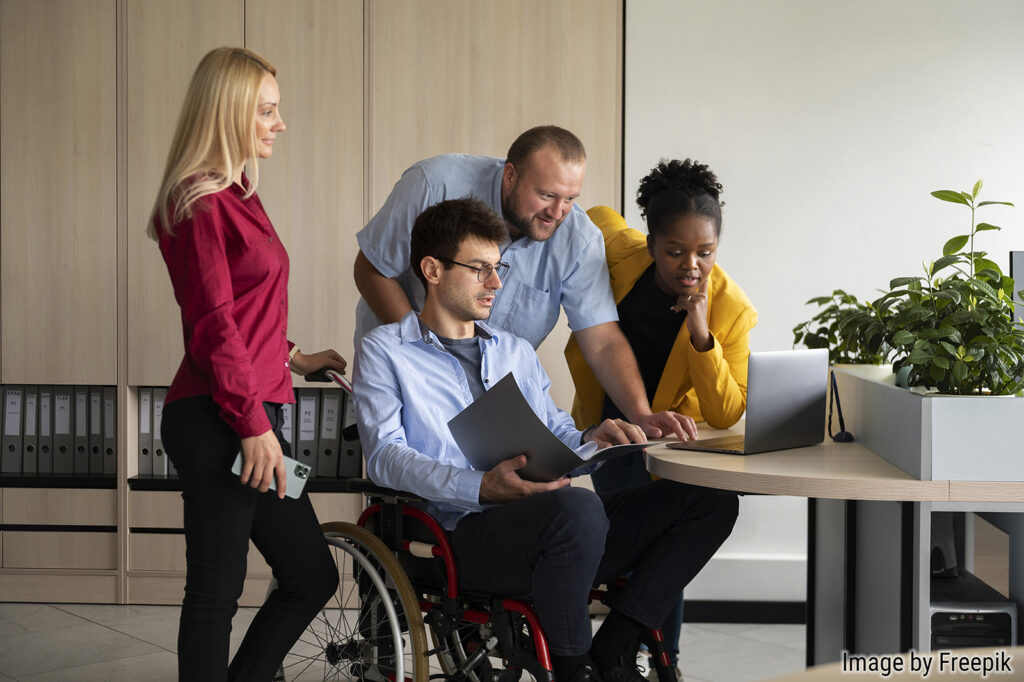In the world of exhibitions and business events, it is paramount to reflect the diversity and inclusivity of the society we live in. Creating an inclusive environment not only enriches the experience for attendees but also enhances the overall impact of the event. The Center for Exhibition Industry Research (CEIR) recognizes the importance of inclusivity, and in this guide, we’ll explore actionable steps event organizers can take to make exhibitions more accessible and diverse.
The Importance of Inclusivity in Exhibitions
Before diving into the actionable steps, let’s touch on why inclusivity is crucial. An inclusive exhibition:
Welcomes Diverse Perspectives. Diversity brings a plethora of unique perspectives, ideas and experiences that can amplify the value of your event.
Enhances Brand Image. Demonstrating inclusivity strengthens your brand’s image, showcasing it as progressive and socially responsible.
Expands Audience Reach. By being inclusive, you are naturally opening your doors to a broader audience, thus potentially increasing attendance.
Boosts Economic Impact. Inclusivity can translate to a higher economic return. A broader and more diverse audience often means increased ticket sales, merchandise purchases and other revenue streams.
Promotes Social Responsibility and Equity. By embracing inclusivity, exhibitions can play a crucial role in promoting social change and justice. Inclusivity ensures that every individual, regardless of their background, has an equal opportunity to engage, learn and benefit from the event.
Steps to Make Exhibitions More Accessible
Physical Accessibility. Ensure the venue is wheelchair accessible, with ramps and elevators where needed. Clear signage pointing to these facilities is essential. Furthermore, reserve space at the front of viewing areas for attendees with mobility devices. Some examples include:
- Ensure the venue has smooth pathways free from obstructions for wheelchair users and those using mobility aids.
- Place tactile floor indicators for individuals with visual impairments to navigate the space.
- Install adjustable seating areas that can cater to different mobility devices and needs.
Hearing and Visual Impairments. For attendees with hearing impairments, consider providing sign language interpreters or closed captioning for presentations. For those with visual impairments, audio descriptions can be invaluable. Some examples include:
- Provide headphones with real-time translations or descriptions at stages or viewing areas.
- Implement large, clear LED screens beside the main stage with closed captioning.
- Offer Braille versions of brochures and event materials for attendees with visual impairments.
Sensory Safe Spaces. For individuals sensitive to over-stimulation, providing a quiet, sensory-friendly space can make a significant difference. Some examples include:
- Create a “calm room” equipped with dim lighting, soft furnishings and noise cancellation for those who might get overwhelmed.
- Offer noise-cancelling headphones at information desks for those sensitive to loud noises.
- Designate certain low-traffic areas as “quiet zones” with clear signage indicating their purpose.
Digital Inclusivity. Ensure that any digital content, such as apps or online schedules, is compatible with screen readers and other assistive technologies. Some examples include:
- Ensure event apps have a voice command feature and are navigable using screen readers.
- Offer alternative text (alt-text) for all images on websites and in digital promotional materials.
- Utilize high-contrast color schemes in digital platforms to benefit individuals with color vision deficiencies.
Clear Communication. It’s essential to inform attendees of the available accommodations in advance. This might include a dedicated section on your website or app and clear signage during the event. Some examples include:
- Send out pre-event emails detailing the accessibility features available, giving attendees the chance to plan accordingly.
- Set up dedicated information booths or help desks at the event focusing solely on accessibility needs and inquiries.
- Incorporate QR codes on event signage that link to audio descriptions or further detailed accessibility instructions.
Creating a Diverse Exhibition Environment
Diverse Speaker Line-up. Aim for a speaker list that represents various backgrounds, industries, genders, ethnicities and abilities. This not only adds different perspectives but also appeals to a wider audience.
Diverse Staff and Volunteers. The team behind the event should be as diverse as its attendees. This includes everyone, from the planning committee to the volunteers.
Engage with Diverse Suppliers. From catering to tech support, consider hiring businesses owned by minorities, women or those from underrepresented groups.
Diverse Content. The exhibits themselves should reflect a broad range of perspectives. Consider collaborating with artists or businesses from different backgrounds to showcase a rich tapestry of experiences.
Gathering Feedback and Continual Improvement
Post-Event Surveys. Seek feedback on inclusivity and diversity aspects. Understand what went well and where improvements can be made.
Engage with Specialist Groups. Collaborate with organizations that champion inclusivity and accessibility to get expert insights on making exhibitions better. Some examples include:
- The National Organization on Disability (NOD)
- The National Center for Accessible Media (NCAM) – This group specializes in digital accessibility, ensuring that all digital content is usable by as many as possible.
- The Global Disability Inclusion – A consultancy that specializes in disability inclusion strategies in workplaces, supply chains, and brand marketing.
Continual Training. Educate the team on the importance of inclusivity and provide them with the tools and knowledge to continually evolve in this aspect. Some ways to do this include:
- Inclusion Workshops: Engage experts to host workshops or training sessions on creating accessible events, addressing both physical and digital accessibility.
- Online Learning Platforms: Use platforms like LinkedIn Learning, Coursera or Udemy, which offer courses on diversity, inclusivity and accessibility in event planning.
- Resource Libraries: Create or provide access to a library of resources, including books, articles and videos, that discuss best practices and innovative solutions for inclusivity in events. Encourage regular reading and discussion sessions.
Inclusivity in exhibitions is not just about checking a box; it’s about creating a space where everyone feels valued, included and seen. By making exhibitions more accessible and diverse, we not only enrich the experience for attendees but also harness the myriad of perspectives and ideas that a diverse group brings. The steps above are not exhaustive but serve as a starting point.
